 MyDogBreeds
MyDogBreeds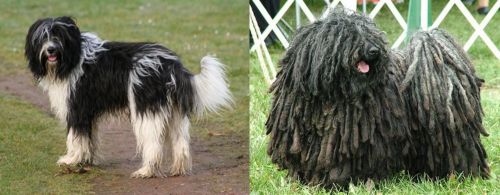 Schapendoes is originated from Netherlands but Puli is originated from Hungary. Both Schapendoes and Puli are having almost same height. Schapendoes may weigh 12 kg / 27 pounds more than Puli. Both Schapendoes and Puli has same life span. Both Schapendoes and Puli has same litter size. Schapendoes requires Moderate maintenance. But Puli requires High maintenance
Schapendoes is originated from Netherlands but Puli is originated from Hungary. Both Schapendoes and Puli are having almost same height. Schapendoes may weigh 12 kg / 27 pounds more than Puli. Both Schapendoes and Puli has same life span. Both Schapendoes and Puli has same litter size. Schapendoes requires Moderate maintenance. But Puli requires High maintenance
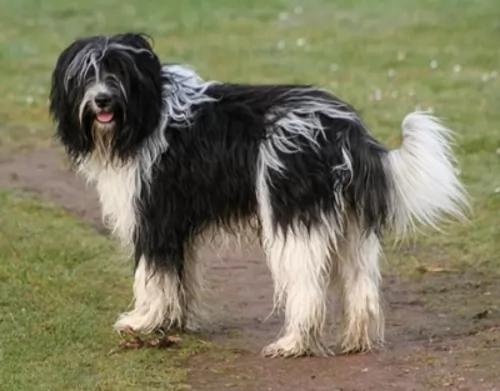 Known also as the Dutch Sheepdog, the Schapendoes originates in the Netherlands.
Known also as the Dutch Sheepdog, the Schapendoes originates in the Netherlands.
It has always been known as a herding dog and farm dog. There were times during the 1940s when the dog’s numbers dropped considerably, but fortunately a breed club known as the Nederlandse Schapendoes was formed in 1947.
It wasn’t until 1971 that the dog earned recognition as a Dutch breed and the Federation Cynologique Internationale recognized this Dutch Sheepdog in 1989.
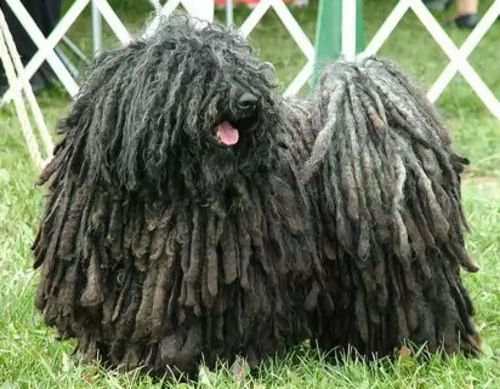 The Puli’s history is ancient, going back about 2,000 years. It is believed that Sumerians used Puli-type dogs to herd sheep thousands of years ago.
The Puli’s history is ancient, going back about 2,000 years. It is believed that Sumerians used Puli-type dogs to herd sheep thousands of years ago.
Ancient excavations show signs of Puli dogs. It is believed that Magyar tribesmen brought Pulis to Hungary for their herding abilities. The Puli was registered by the American Kennel Club in 1936, and the Puli Club of America was formed in 1951.
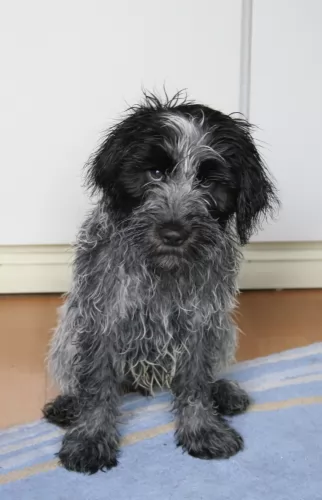 The Schapendoes is a medium sized herding dog standing at between 40 and 50cm in height and weighing between 12 and 25kg.
The Schapendoes is a medium sized herding dog standing at between 40 and 50cm in height and weighing between 12 and 25kg.
When you look at him, you’re reminded of the Old English Sheepdog or the Bearded Collie. The thick, double coat of the dog can be a mix of colors and can be brown and white, black and white and gray and a mix of all these colors.
In spite of the thick coat, the dog sheds very little. He is an active dog and is known to be able to jump high. This makes him perfect for ball and frisbee games as he will leap into the air to try and catch the ball.
He has medium length floppy ears and the tail is long and feathered, carried high when busy, but when he is relaxed the tail hangs low.
Brave, cheerful,social and loyal, the Schapendoes is a shaggy Dutch dog who makes a splendid pet and companion for active people.
He is intelligent too, and in fact it is why he makes such a great farm dog too as he is able to work on his own and co-operates with his owner. He just loves being active, and will happily join you on all your hikes, runs on the beach, swimming, walks and other activities.
He thrives on being counted in as one of the active family members. This intelligence of his makes him easy to train and socialize, making him well mannered and obedient.
His amicable nature allows him to get on with all well disciplined children as well as with other pets in the home.
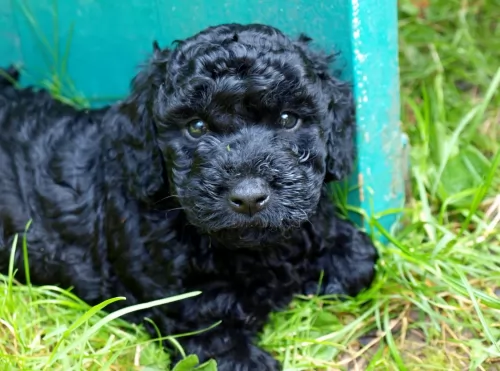 The Puli is a medium sized dog from Hungary standing at between 36 an 45cm in height and weighing 10 to 13kg. He has always been a herding dog and his long,corded coat has been his trademark.
The Puli is a medium sized dog from Hungary standing at between 36 an 45cm in height and weighing 10 to 13kg. He has always been a herding dog and his long,corded coat has been his trademark.
The color of the coat can be black, white or cream but black is the color most seen with the Puli. The dog may well be a low shedder, but the coat is still going to need a lot of maintenance to keep it looking reasonable. It gets longer and longer and will need to be groomed to keep the cords neat and clean.
The Puli is an intelligent dog and it can be trained to respond to some simple commands. If the dog gets enough exercise, he can adapt to life in the country or in the city. As a herding dog he is used to being busy and will need walks, a run off his leash in the park and ball games.
They get on well with children and with other pets and are loyal to their owners and wary of strangers. They are highly active dogs these, and they just love playing games throughout their adult lives.
Because they are dogs which need a lot of exercise and space, they are more suited to life in the countryside as opposed to life on a small property in the city. They also make good faithful family guardians.
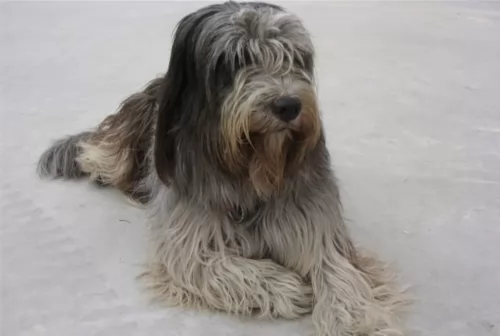 Because this dog has always been a working dog, he has learned to be independent.
Because this dog has always been a working dog, he has learned to be independent.
They’re eager to please their owners and easy to train too. They’re not aggressive and are friendly and affectionate and want to protect their owners.
They’re cheerful and playful and are tolerant of children and pets in the home. However, they don’t want little children being allowed to climb over them.
You can expect these big cuddly dogs to make loyal, devoted pets when treated with love, care, kindness and respect.
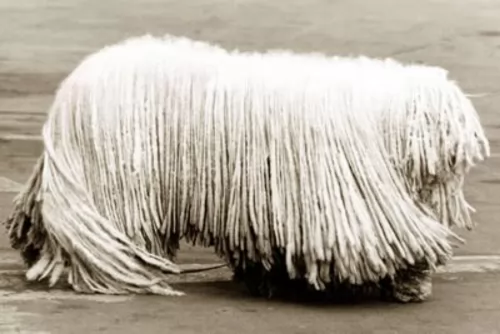 Your Puli is a self-confident, strong willed dog that is intelligent and can learn to be obedient and well mannered. They are also social and playful, and will love to be a family pet, being prepared to provide friendship and loyalty.
Your Puli is a self-confident, strong willed dog that is intelligent and can learn to be obedient and well mannered. They are also social and playful, and will love to be a family pet, being prepared to provide friendship and loyalty.
Because he has always been a herding dog, he takes his role of guardian and protector of his human family seriously. He makes a splendid pet if you’re ready to tackle the long coat which makes sure he doesn’t fit into the low-maintenance category.
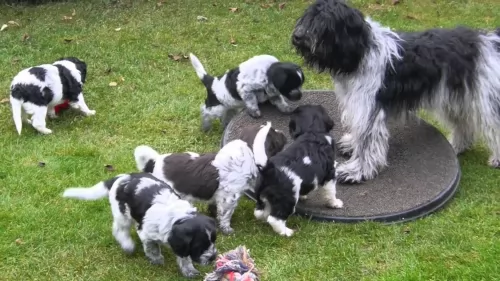 Your Schapendoes is a generally healthy breed and with good food, a good amount of exercise and plenty of love and care, he can reach the ripe age of 15 or so.
Your Schapendoes is a generally healthy breed and with good food, a good amount of exercise and plenty of love and care, he can reach the ripe age of 15 or so.
Every dog however, has the potential to get one of the many canine diseases there are. Some of these canine diseases to look out for include hip dysplasia, dental problems, eye diseases, bloat, cancer and others.
Some people think that problems with teeth are mild – nothing to worry about and yet bad teeth can affect the quality of life for your pet.
Problems with the pet’s teeth usually start with a build- up of plaque that leads to tartar. This can lead to gingivitis and then periodontal disease can develop. Dogs can have bad teeth and this can affect organs in the body.
Problems with the teeth can be serious and your veterinarian will need to do an oral checkup and dental cleaning. If your dog has oral problems, you may notice bad breath, loose teeth, dribbling, tartar on the teeth and pawing at the mouth.
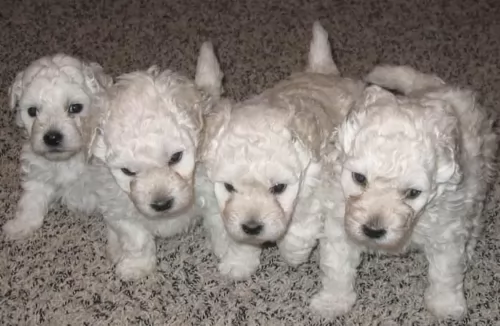 Joints, eyes, and skin problems can cause problems with the Puli dog. Hip dysplasia is a problem with many dogs that can cause pain and also lameness.
Joints, eyes, and skin problems can cause problems with the Puli dog. Hip dysplasia is a problem with many dogs that can cause pain and also lameness.
Check your pet over with grooming sessions and make sure both the ears and eyes are free of discharge and redness.
The coat is thick and the Puli will require you to watch his skin for bacterial infections which can be caused by a lot of itching and scratching. Other common canine health issues to look out for are cancer and bloat.
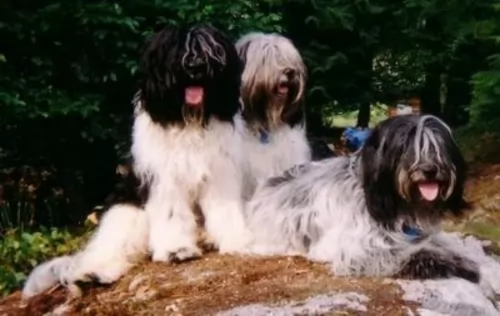 The Schapendoes has a dense double coat which can become quite long in places. The hair is slightly waved and there is quite a lot of hair around the face which includes a mustache and beard.
The Schapendoes has a dense double coat which can become quite long in places. The hair is slightly waved and there is quite a lot of hair around the face which includes a mustache and beard.
He will need to have his hair brushed twice a week, and some people choose to have him professionally clipped.
Trim his nails, check inside the ears for ear infection, check that the eyes are nice and clear without discharge, check inside the mouth for rotten teeth and check him over for any unusual lumps.
Your Schapendoes is an active dog and you want to ensure that the food you buy him keeps him active and healthy.
It is important to choose the best dog food if you buy commercially manufactured dog food. Then you can be sure it will have the right formulation of vitamins and minerals.
Home-made food is also an excellent choice for your pet. Boiled chicken, brown rice or pasta and spinach, sweet potatoes and carrots can be very healthy and tasty. Keep it simple like this. Chop it all up and add it into the dry kibble a couple of times a week to give him a nutritious treat.
Some raw meat added in occasionally will do him the world of good and keep the skin and coat healthy. Never leave your pet without a constant source of fresh, cool water.
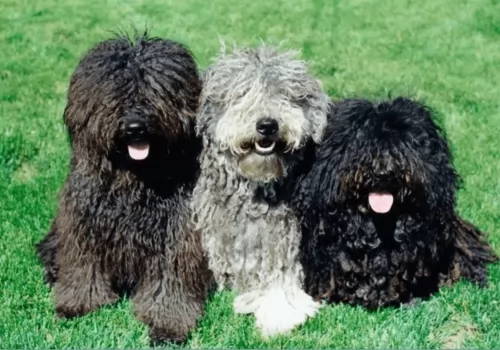 Training and socialization is important for any dog and not just the Puli. Well trained dogs are a joy to have around – they are obedient and well mannered. The Puli is intelligent enough for you to train him yourself or you can have a professional trainer do it for you.
Training and socialization is important for any dog and not just the Puli. Well trained dogs are a joy to have around – they are obedient and well mannered. The Puli is intelligent enough for you to train him yourself or you can have a professional trainer do it for you.
The Puli is an athletic dog but you don’t want to start with any strenuous exercise with a young dog less than a year of age. Take your young dog for walks and give him some ball games. Only start more strenuous exercise later on to spare unnecessary pressure on the joints which could lead to hip dysplasia later on.
Every dog needs to be brushed and groomed to ensure its health. A dog like the Puli will need additional grooming because of the long dreadlocks for a coat. Many Puli owners prefer to have the hair cut short.
The coat of the Puli luckily doesn’t shed much but the coat, if you keep it long, will require a special wide tooth comb. You’ll need to check inside his ears, check that his eyes are bright without any discharge and also trim his nails.
You will have to check inside his mouth too. He can’t tell you if he has a rotten tooth that is painful and causing him to be sick. You need to regularly check his teeth.
It is important to know how much to feed your Puli. A healthy diet is so important for good health and a long life. All dogs have different appetites depending on their age, their breed, their size, the season of life they’re in and their activity levels.
It is better to feed your dog twice a day as opposed to one meal a day to avoid life threatening illnesses such as bloat. There are excellent commercially manufactured dog foods, but also bad ones, so you want to make sure that the kibble you choose is a high quality one with lots of vitamins and minerals.
You want to give him some home-made food too, keeping it simple and uncomplicated – the way dogs like it. Boiled chicken, brown rice or pasta and spinach, sweet potatoes and carrots are a healthy choice for your pet.
Chop it up and add it into the dry kibble a couple of times a week. Some raw meat added in from time to time will contribute to him being healthy. Never leave him without a constant source of fresh, cool water.